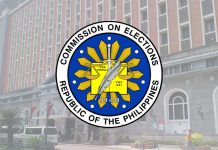
THE Department of Energy (DOE) is looking for possible sites that can host small nuclear power plants.
This was after the Philippines and the United States sealed an agreement meant to facilitate cooperation on the peaceful uses of nuclear energy.
Energy undersecretary Sharon Garin said they are studying around 15 to 16 areas in the Philippines, including provinces in the western part of the country like Palawan.
Garin said nuclear power will be cheaper than energy produced from fossil fuels as well as being cleaner.
“Kaunti lang ‘yung fuel mo which we have to import pero ‘di volatile ang presyo at steady siya,” Garin said.
Meralco, which signed a deal with a US-based firm to explore the use of small modular reactors or SMRs or micro modular reactors or MMR, also expects cheaper electricity from these so-called “nuclear batteries.”
“Being a cheaper source of energy globally, I would like to believe that nuclear is going to be very competitive in terms of costs,” said Meralco spokesman Joe Zaldarriaga.
In contrast to the mothballed Bataan Nuclear Power Plant (BNPP) that can produce 620 megawatts of electricity, each MMR or nuclear battery can generate between 3.5 to 15MW of electricity. But multiple units can be deployed to meet needs.
According to Philippine Nuclear Research Institute, the Philippines said the development of the BNPP, which is the first nuclear plant in Southeast Asia, proves that the country has the expertise in nuclear technology.
PNRI scientist Alvie Astronomo said nuclear power is as safe and clean as renewable power sources.
“Kung ikukumpara po natin ang nuclear sa ibang power source, ang kanyang safety ay comparable po sa hydro at saka solar. ‘Pag tiningnan natin ang mortality rate, kung tuuusin, ang pinakamalaking mortality ay coal at oil,” Astronomo said.
But the Center for Energy, Ecology and Development (CEED) said the answer to the country’s energy problem is not nuclear but renewable energy.
“Hindi nuclear ang solusyon, renewable energy ang solution dahil mura, malinis, ‘di natin kailangang iangkat at napakalaki ng potensyal dito sa Pilipinas. Wala pang peligrong dala ang nuclear,” said CEED deputy executive director Avril Torres.
The group said all the benefits of nuclear can be achieved using renewable and indigenous sources of energy such as solar, wind, hydro and geothermal, among others.
President Ferdinand Marcos Jr. earlier said he is looking to add nuclear to the country’s energy mix by 2032.
The DOE has said that it will take eight to 10 years to construct a nuclear plant, whether a traditional large reactor or a small modular reactor. (ABS-CBN News)







